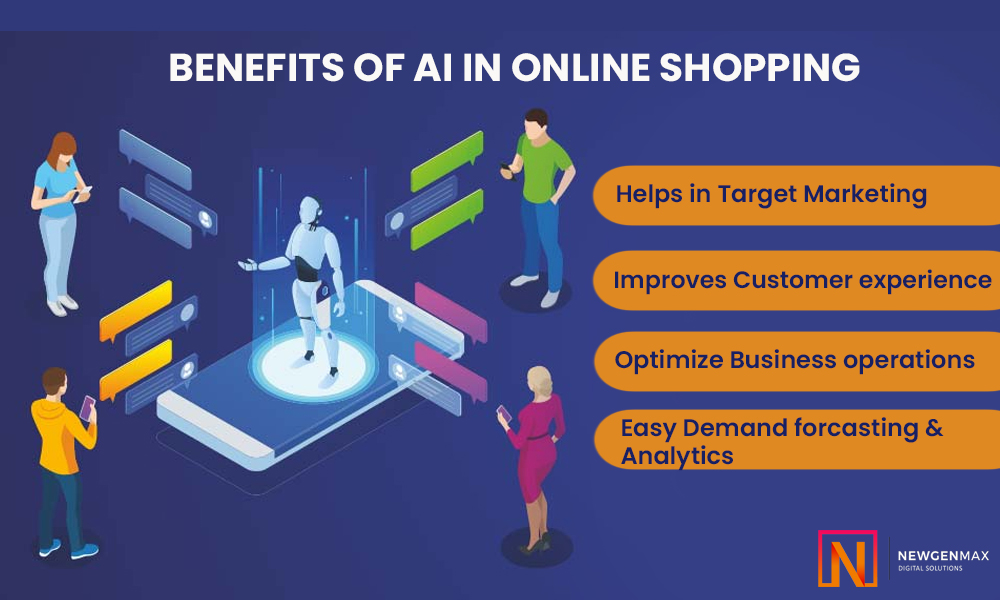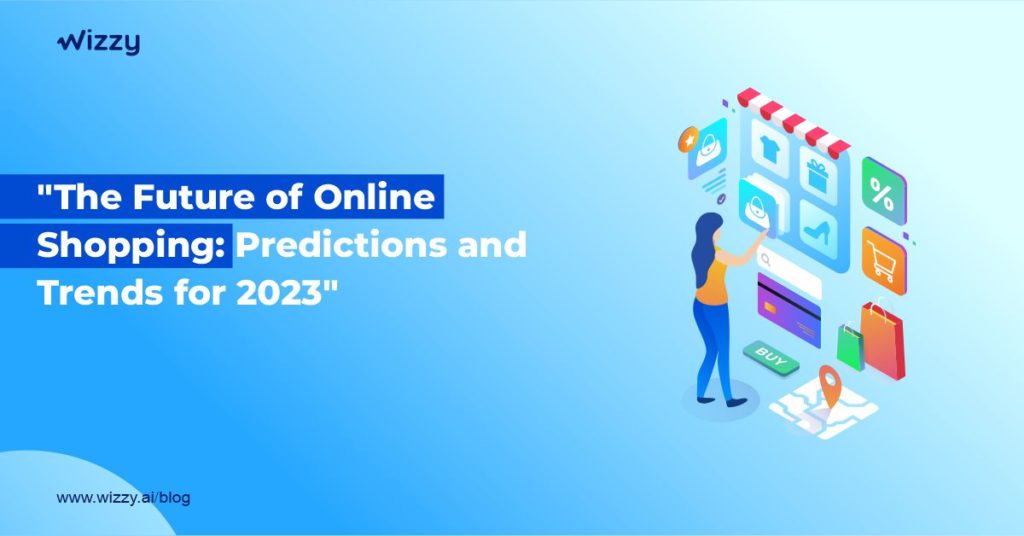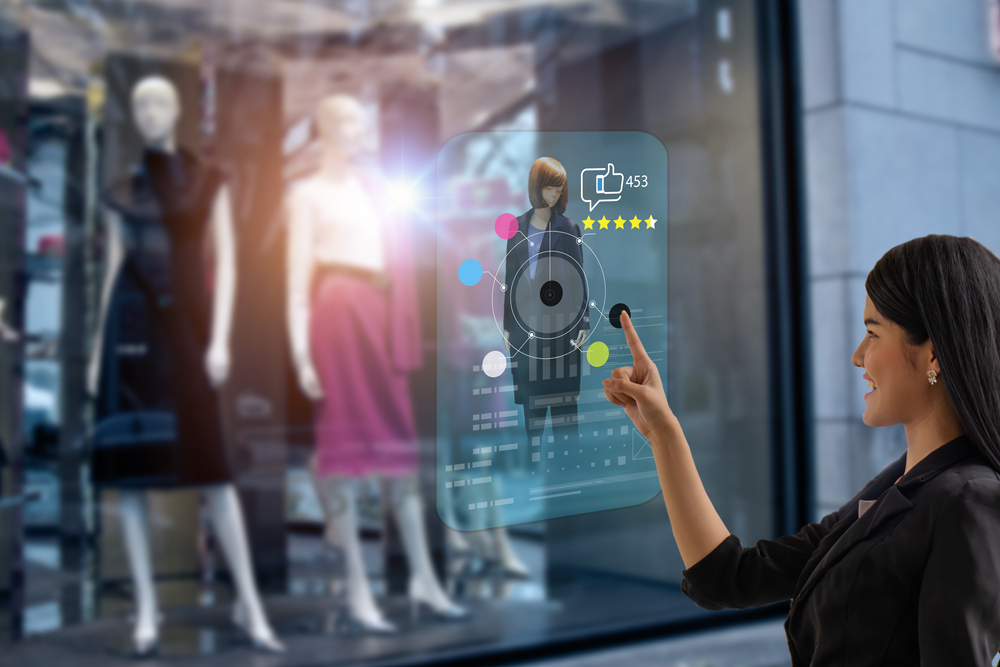The Future of Online Shopping Experiences: A Glimpse into Tomorrow’s Retail
The way we shop is evolving at an unprecedented pace. With advancements in technology and consumer behavior shifting rapidly, the future of online shopping is shaping up to be a highly personalized, immersive, and convenient experience. From AI-powered recommendations to virtual reality (VR) shopping experiences, the future is filled with exciting possibilities.
This article explores the various trends, technologies, and innovations that will redefine the online shopping experience in the years to come.

1. AI and Machine Learning: The Heartbeat of Personalized Shopping
As online retailers strive to offer better customer experiences, Artificial Intelligence (AI) is becoming an essential tool. AI and machine learning are revolutionizing online shopping by providing hyper-personalized experiences.
How AI is Enhancing Shopping
AI-driven recommendation engines are already in play on e-commerce platforms, analyzing customer data to suggest products based on browsing history, previous purchases, and even social media activity. For example, Amazon and Netflix use sophisticated algorithms to suggest items and content, respectively, tailored to individual preferences.
In the future, AI will go even further, creating highly accurate customer profiles and enabling retailers to offer real-time dynamic pricing, where prices can adjust based on demand, availability, or customer loyalty.
Virtual Assistants and Chatbots
Customer service is also seeing a transformation with AI-powered chatbots and virtual assistants. These tools are capable of handling a range of customer queries, offering product suggestions, and even assisting with purchases, all while improving efficiency and reducing the need for human intervention.
2. Augmented Reality (AR) and Virtual Reality (VR): Immersive Shopping
While AI is revolutionizing the backend of e-commerce, AR and VR are set to transform the front-end experience. These technologies provide customers with a more immersive and interactive shopping environment.
The Rise of Virtual Showrooms
Retailers are beginning to adopt virtual showrooms, where customers can view and interact with products as if they were in a physical store. AR apps let consumers try on clothes or visualize furniture in their homes before making a purchase. For instance, Ikea‘s AR app allows customers to see how furniture looks in their living spaces before they buy.
This level of interactivity enhances customer confidence and reduces the likelihood of returns, as customers are more informed about the products they’re purchasing.

VR Shopping Experiences
Looking ahead, VR has the potential to completely transform online shopping. Imagine stepping into a fully immersive virtual store where you can walk down aisles, interact with products, and even try them out—just like you would in a real-world store. These experiences will make shopping more engaging and realistic, creating a bridge between traditional retail and online shopping.
3. Voice Commerce: Shopping with Your Voice
With the increasing popularity of voice assistants like Amazon’s Alexa, Google Assistant, and Apple’s Siri, voice commerce is becoming a significant trend. By 2025, voice commerce is projected to account for billions in sales, as consumers increasingly opt for hands-free shopping experiences.
How Voice Commerce Works
Voice shopping allows users to place orders, track deliveries, and even get product recommendations just by speaking. For instance, Alexa users can say, “Order my favorite coffee,” and Alexa will automatically order it from their preferred supplier, based on past purchases.
As voice technology improves, voice shopping will become more sophisticated, allowing for multi-step transactions, voice-based product discovery, and even custom-built voice commands that cater to individual preferences.
4. Blockchain and Cryptocurrency: The Future of Payment
Blockchain technology and cryptocurrency are also making their way into the online shopping space. Cryptocurrency payments have already started appearing on major e-commerce platforms, with Bitcoin and Ethereum being accepted by retailers such as Overstock and Newegg.
Why Blockchain Matters in E-Commerce
Blockchain offers a secure, decentralized way to process transactions, ensuring that personal and payment information is kept safe from fraud. In addition to payment processing, blockchain can also improve supply chain transparency, allowing consumers to track the origin of products, including details on ethical sourcing or the environmental impact of their purchases.
The Role of Cryptocurrency
Cryptocurrency allows consumers to make cross-border purchases with fewer fees and faster processing times compared to traditional payment methods. As the adoption of digital currencies grows, it’s likely that more retailers will embrace crypto payments.
5. Sustainability: Conscious Shopping for the Future
Sustainability is an issue that consumers are increasingly considering when making purchases. With a growing emphasis on environmental impact and ethical consumption, online retailers will have to adapt their business models to meet consumer demand for sustainable products.
Eco-Friendly Shipping and Packaging
The rise of eco-friendly shipping options is expected to become more widespread. Many retailers are already adopting carbon-neutral shipping, using biodegradable packaging, and offering incentives for customers to choose sustainable shipping options.
Consumers are also looking for transparency about the sustainability of the products they buy. In response, companies will integrate more detailed product information, including sourcing, manufacturing processes, and environmental impact, directly on their websites.

Eco-Conscious Consumerism
The future of online shopping will see even greater demand for eco-conscious consumerism, driven by consumer values and enhanced by technologies that offer greener alternatives. AI-powered inventory management and blockchain can help track and verify sustainability credentials of products, providing consumers with more trustworthy information.
6. Smart Retail Devices and Automation
As we look into the future, the integration of smart devices and automation will play a critical role in shaping the shopping experience. From automated warehouses to smart refrigerators that suggest grocery lists, technology will make shopping more seamless.
Automated Delivery
Imagine receiving your products via drones or autonomous vehicles instead of waiting for traditional shipping methods. These technologies are not far off, with several companies already testing automated delivery systems to speed up the process.
7. The Role of Data in Shaping Shopping Experiences
Data analytics will continue to be the backbone of online shopping, allowing brands to optimize their offerings and customer engagement strategies. Big data enables businesses to track consumer behavior and preferences, providing insights that help companies better anticipate what customers want before they even know they want it.
By combining customer data with AI, retailers can refine their inventory, personalize offers, and improve overall customer satisfaction, ensuring that online shopping remains competitive and relevant in the future.
FAQ: Frequently Asked Questions
Q1: How will AI improve online shopping experiences?
A1: AI will enhance online shopping by providing personalized recommendations, dynamic pricing, and real-time customer support through chatbots. AI can also predict consumer behavior, making shopping easier and more intuitive.
Q2: Will virtual reality replace traditional shopping?
A2: While virtual reality will create immersive shopping experiences, it is unlikely to replace traditional shopping altogether. However, it will significantly enhance the online shopping experience by offering virtual showrooms, fitting rooms, and more interactive product experiences.
Q3: How will voice commerce change the way we shop?
A3: Voice commerce will make shopping faster and more convenient by allowing consumers to place orders, track deliveries, and get personalized product recommendations, all through voice commands.
Q4: What role will sustainability play in the future of online shopping?
A4: Sustainability will become increasingly important in the future of online shopping. Consumers will demand eco-friendly products, carbon-neutral shipping, and greater transparency about sourcing and manufacturing processes.
Conclusion
The future of online shopping is an exciting blend of innovation and convenience, driven by technological advancements like AI, AR/VR, and blockchain. As these technologies continue to evolve, they will empower both consumers and retailers, creating more personalized, efficient, and immersive shopping experiences. From voice commands to virtual stores, the way we shop will be unrecognizable compared to today’s standards.
As retailers embrace these changes, they will be able to cater to the demand for personalized experiences, secure transactions, and sustainability—ultimately shaping the online shopping landscape for generations to come.


